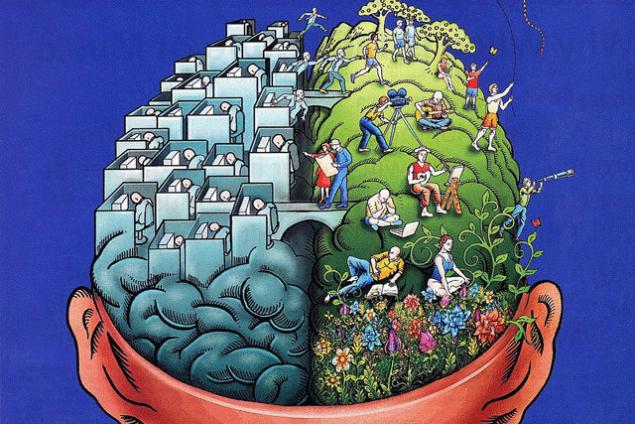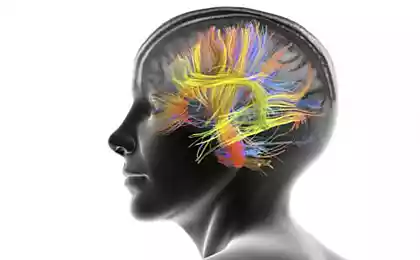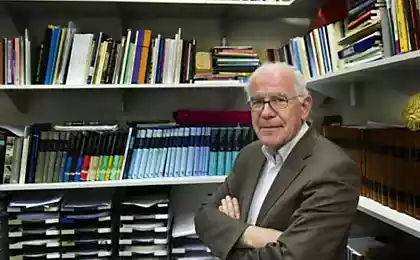531
The uniqueness of the human brain

© Allan Ajifo the human Brain big, but the size is not so important. More importantly, inside the brain. In the process of growth and brain development is the formation of neural networks of contacts between neurons: the desired contacts are amplified, unnecessary cleaning. This process actually never ends. Even in an older person, some changes of neural networks. So, for example, and 90-year-old man can learn new words. But the main formation of neural networks occurs in the first 10 years of life.
Scientists have always wondered why the human brain as a result of development can generate new opportunities. There were several hypotheses. The famous scientist-linguist Noam Chomsky and his colleagues put forward the hypothesis that in the brain there are innate brain modules that are responsible for chelovecheskie cognitive function — for example, for formation of language skills. The existence of language and complex mechanisms of communication are very important to people — all the modern technologies only exist because we learned how to pass information from generation to generation.
Naturally, scientists are very interested in this hypothesis and sought evidence of the existence of such modules in the brain at a biochemical level. But not found. It turned out that in the human brain there is no anatomical structure that is specific to humans. So a new feature appears, and the structure that is responsible for it, no. Then, after the initial shock, the scientists thought it was not so strange, because the human brain is very plastic. Even an elderly person after a stroke, could over time restore some of the lost abilities, as undamaged parts of the brain can take over functions of damaged.
Brain plasticity exists at two levels. The first is that our brain is receptive to the assimilation of new information. If we look at the brain of insects, we will see that almost all of their behavior inherent in the structure of the brain. That is, every irritation insect will react in a certain way. No plasticity in the behavior of not — just because of all the behavioral instincts fully defined. But human behavior is not predetermined. For example, if you attack a cat, you first scared, and then realize that cats are not afraid of you, and cease to fear them. This is behavioral plasticity.
Another level of brain plasticity is the plasticity of neural networks. Restoring lost abilities after a stroke is one example of such plasticity. There are more radical examples. In children, there are diseases in which the brain is an autoimmune reaction, leading to frequent epileptic seizures, and if without treatment, death.
The only known way to fight this disease is to remove one of the hemispheres of the brain.
Of course, the brain of a child required more than a year to compensate for the loss of a whole hemisphere. However, after this period all abilities restored, and no one even suspects that such a person has no half of the brain. In this example we see the manifestation of the plasticity of neural networks, when damage to one section of the neurons in another area takes over the functions of the first.
When it became more or less obviously, scientists realized that it would be naive to expect that in our brain there are some specific regions and structures that are responsible for language, because different regions of the brain can assume different functions. This means that the monkey had a particular neural network could be responsible for movements of the hands, but it may be responsible for the movement of language. And instead of gesticulating like monkeys, we have the ability to communicate through speech.
Almost simultaneously with the idea of a modular organization of the brain arose another hypothesis neotenic. Neoteny is when an adult organism retains traits of child development that are inherent in other types. For example, the axolotl — these are amphibians that resemble larvae of other species, but they are all older organisms.
As for humans — about 100 years ago, scientists loved to study skulls and their shape and drew attention to an interesting phenomenon: the skull the adult skull-like baby chimpanzees, gorillas or other apes. Skull monkeys for life continues to grow, and a human skull shape remains frozen at the kindergarten level. I'm sure everyone has noticed that when chimpanzees are small, they have a more human face. And if you look at adult monkeys, they have a huge jaw and relatively small skull.
After this observation in the 1970-ies, the famous evolutionary biologist Stephen Jay Gould conjectured that maybe it's not even in the bones, and the fact that the human brain never loses its infantile characteristics. That is, the human brain retains behavioural plasticity characteristic of young monkeys, but they have vanishing a few months after birth. That is why we can learn, we have more social contacts, everything is interesting. We would remain children throughout their lives.
Naturally, the human brain is not fully retained in the children's condition, but some development is really very slow. For example, the formation of neural networks takes a very long time — 10-15 years. This means that over a long period, a person is not fully adult from a psychological point of view and may not be completely independent. If not, the other team members: parents, relatives, who can provide support and help — people will not be able to fight for existence. published
Author: Philip Haytovich,PhD in Biology, head of the comparative biology group in the Institute for Computational Biology in Shanghai, Professor SKOLKOVO Institute of science and technology (SkolTech)
Source: postnauka.ru/faq/44422
5+5+5 books for yourself, business and life that you want to read up to 30 years
Palm Sunday — the beginning of the celebration of disbelief























